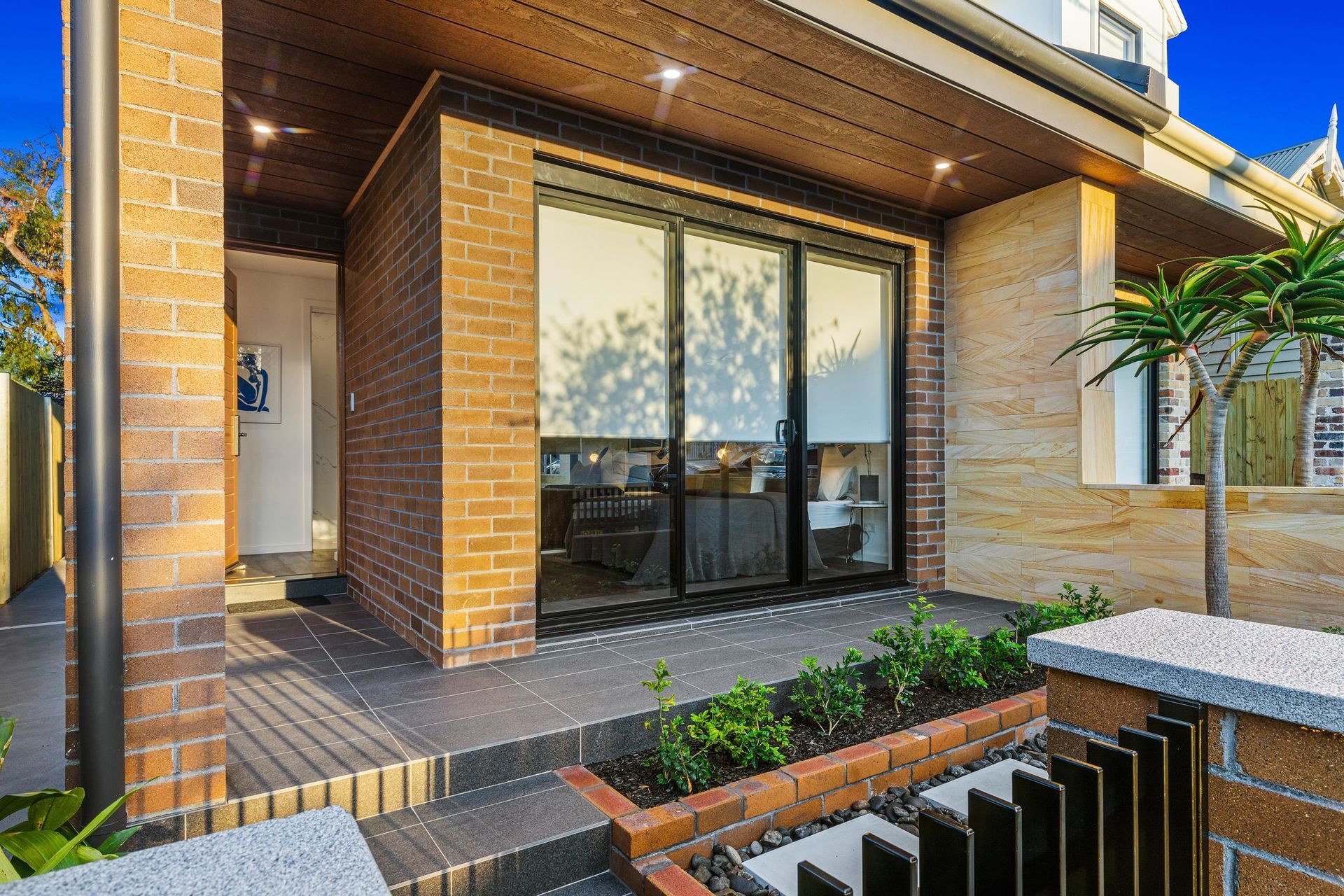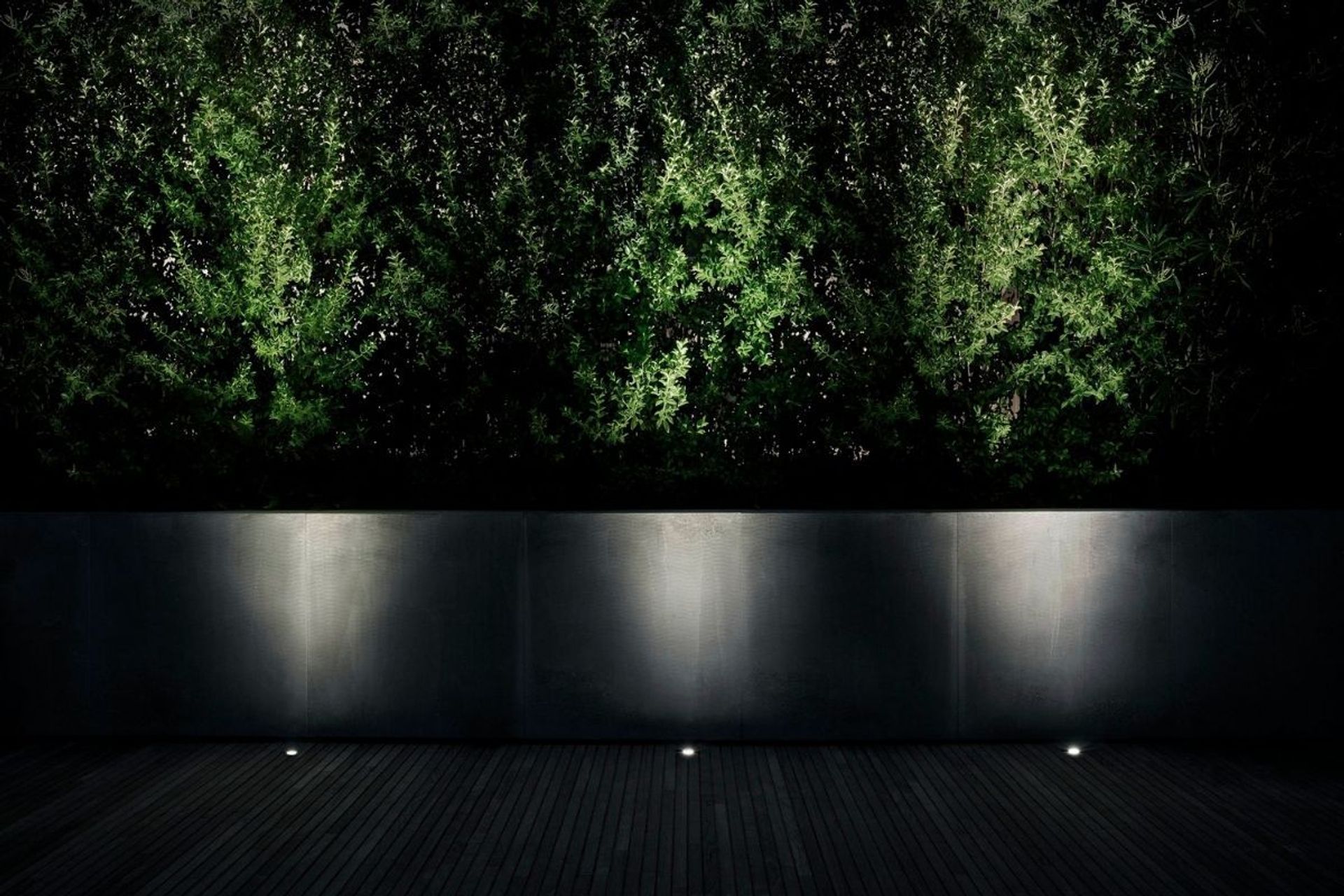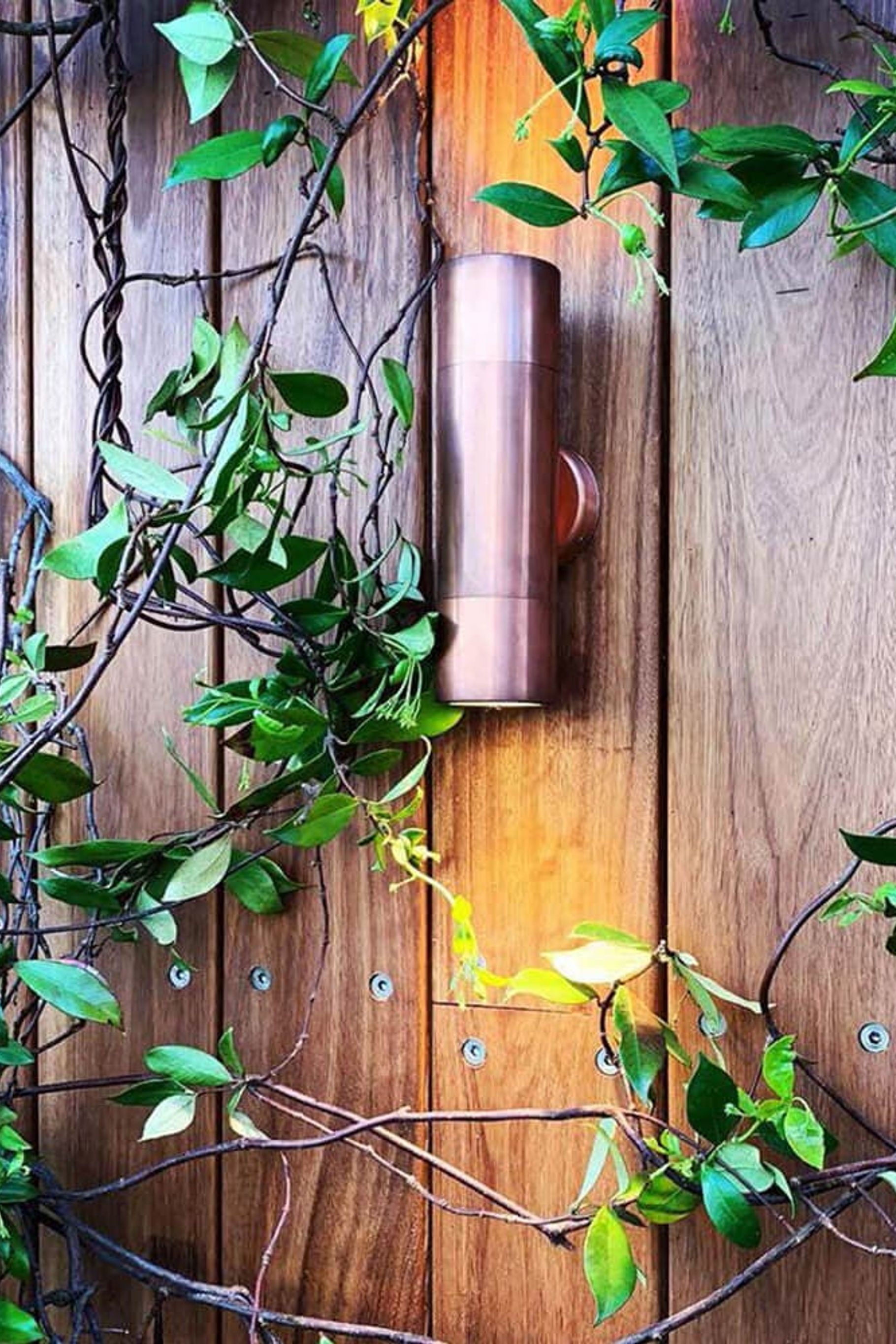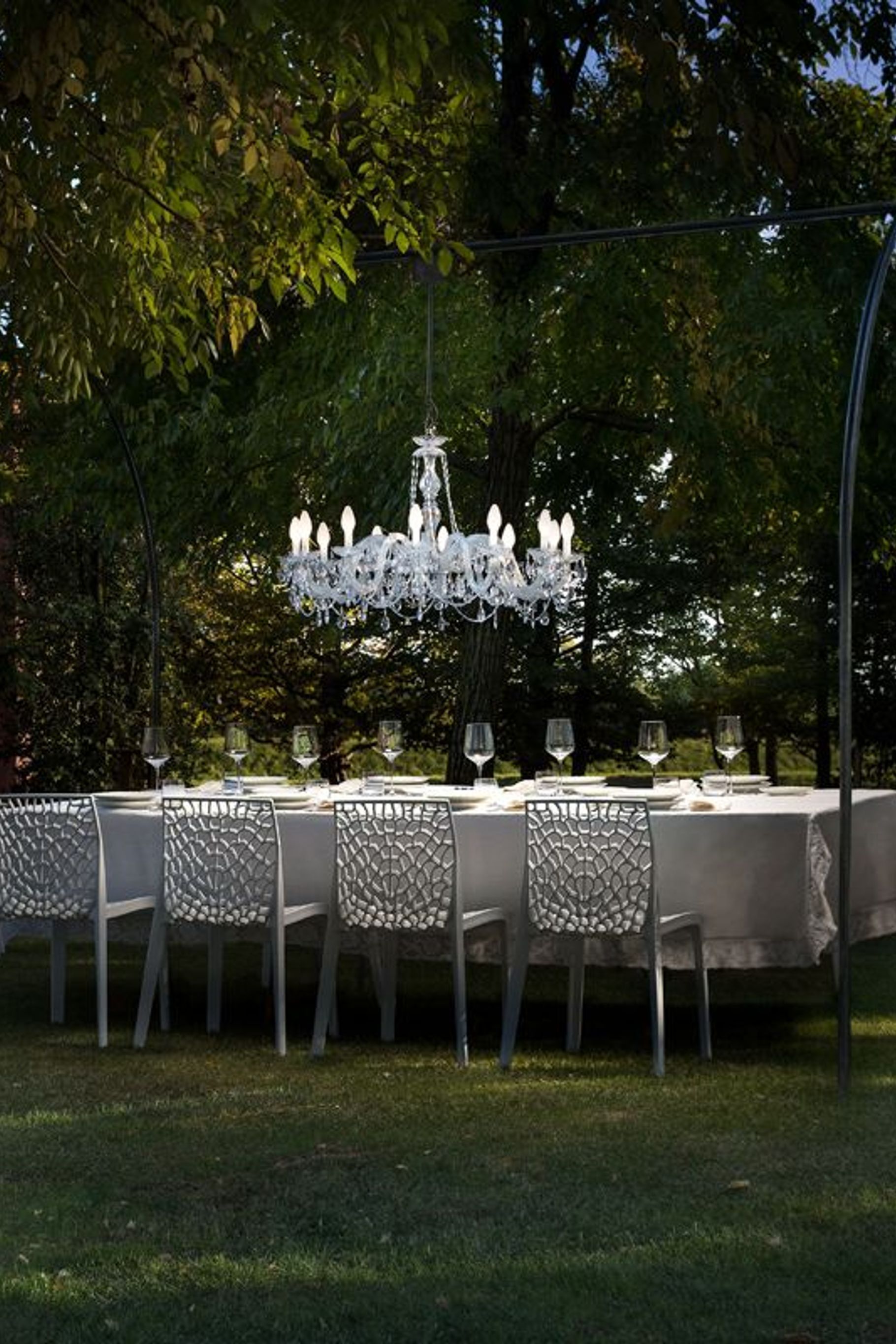Outdoor lights: the complete guide

Where to place outdoor lights
One of the first things to think about is the placement of your outdoor light features. Here are some of the key areas to focus on.
In entertainment areas
If you want to entertain outdoors after sunset, then you definitely need to install adequate lighting.
Here are some of the different types of lights you might want to incorporate into an outdoor entertainment area:
- Outdoor ceiling lights
- Outdoor lighting pendants
- Outdoor wall lights (including bunker wall lights and uplights)
- Deck lights
- String lights
- Small spotlights to illuminate a special feature, like a potted tree or sculpture.
If you have stairs leading up to your deck, you might also want to install stair lights, both for safety and decorative purposes.
Related article: 10 different types of outdoor lights for your home

Along pathways and walkways
Pathways and walkways are also critical areas to illuminate with exterior lights.
Bollard lights and wall lights are good options for walkways that hug the side of your house. For pathways, pole lights or bullet lights are practical options. For adequate lighting, you will need to space your lights 2 - 2.5 meters apart; however, you can place them closer together for a more vibrant look.
Also, keep in mind that pathway lights will be visible during the day. Because of this, try to choose decorative outdoor lighting options that tie in with your overall design style.
Related article: Everything you need to know about bollard lights
Along your drive
Installing exterior lighting along your driveway is another essential part of any comprehensive outdoor lighting plan.
Depending on your needs, you can opt for security lighting solutions, or you can go for softer, more decorative solutions like pole lights.

By your garage
Illuminating the exterior of your garage adds functionality to the space. This is also one area where you'll almost always want to use security lighting solutions such as floodlights.
If you don't want the lights to shine constantly, you can also opt for motion sensors.
To illuminate focal points and features
Do you have a beautiful tree in your garden, a stunning shrubbery, or a water feature? Clever outdoor light placement can illuminate and enhance these features at night while providing extra light to see in the garden.
Lighting up different features in your garden will also help add depth and dimension to the space at night.
Illuminating a feature is usually pretty simple. Most of the time you'll want to use inconspicuous lights such as spike lights. Try to ensure that your lights are placed in such a way that they light up the feature without shining directly into one's eye.
When it comes to trees, always make sure that you illuminate the trunk. If you only illuminate the canopy, you'll create the unsettling illusion that the tree is floating, UFO-like, in mid-air.
If you want to illuminate a tall tree, you'll need to install roughly 3 - 5 x 50-watt floodlight bulbs. This should create a 12-meter expanse of light to fully illuminate up the tree. On shorter trees, you can use spotlights and bullet lights.
For trees under 6 meters, you'll probably only need a couple of up lights with 20-watt bulbs.
Related article: 7 garden lights that are simply magical

IP ratings explained
One of the most important specs to get to grips with around exterior lighting is IP ratings. IP ratings indicate what level of exposure to the elements lights can handle.
The highest IP rating is IP68. Outdoor light products rated at IP68 are designed to stand up to dust, dirt debris, exposure to water, temporary emersion, hail, jets of water, and more.
If you are installing lawn lights, pole lights, spotlights, or any other lights that don't have any protection, then it's best to choose IP68 rated options. For outdoor lights that are undercover, such as outdoor ceiling lights, you can go with a slightly lower IP rating, such as IP67, IP66, or even IP65 if the area is well-protected.
Bulb choices
LED bulbs are a popular choice for both indoor and outdoor light fittings thanks to their high level of energy efficiency. Although they are slightly more expensive, LED bulbs also last up to 25x longer, making the extra cost well worthwhile.
LED lights also don't produce heat like halogen bulbs do, making them a safer choice in the garden.
Related article: LED Lights - The Definitive Guide

Calculating lumens
Lumens are what indicate how bright light bulbs are. Watts can also be an indication, but LED technology can now produce far more lumens for far fewer watts. Therefore, it's best to work on lumens rather than watts.
If you are wondering how much light you need in an area, here is a handy calculation. For ambient indoor lighting, the average recommended amount of lumens per 20 square meters is 5,000 lumens.
This means that if you have a deck area that is 5m x 4m, then your total lighting in that area should add up to roughly 5,000 lumens.
Outdoor areas often take more lumens to light, as the surrounding darkness absorbs the light, and there are fewer reflected walls for the light to bounce back from. At the same time, very bright, harsh lighting isn't something you want in an outdoor entertaining area. This is more suited to security lighting.
The importance of planning ahead
Outdoor lights should never be an afterthought or something you rush into. For best results, take some time to create a comprehensive outdoor lighting plan.
If you need to install outdoor light infrastructure, such as burying electrical cables, it's a lot cheaper and easy to do this all in one go. Therefore, think carefully about all your outdoor lighting needs.
If you're one of the 90% of Australians who value sustainability, then you might also want to opt for solar garden lighting. If so, make sure that the solar lights will get enough sun to charge fully during the day.
From here, investigate different outdoor light fittings. Look for ones that can be easily maintained and which you can get spare parts for. You should also plan for bi-yearly cleanings and yearly maintenance to keep your exterior lighting in tip-top shape.

Everything you need to know about outdoor lights
Outdoor lights are a transformative, vital feature if you want to utilise your outdoor areas at night. They can also be important for security and safety reasons. Once you have figured out your lighting plan, the next step is to find the right type of exterior lights, that are both durable and fit your design style. While these practical considerations will heavily influence your decision, leave some room for your own personal tastes when it comes to the look and feel you’re after. Carefully balancing all these elements together will be what most likely brings you to the best outdoor lighting solutions for your outdoor space.
Related article: 11 of the best outdoor lighting trends for 2024
